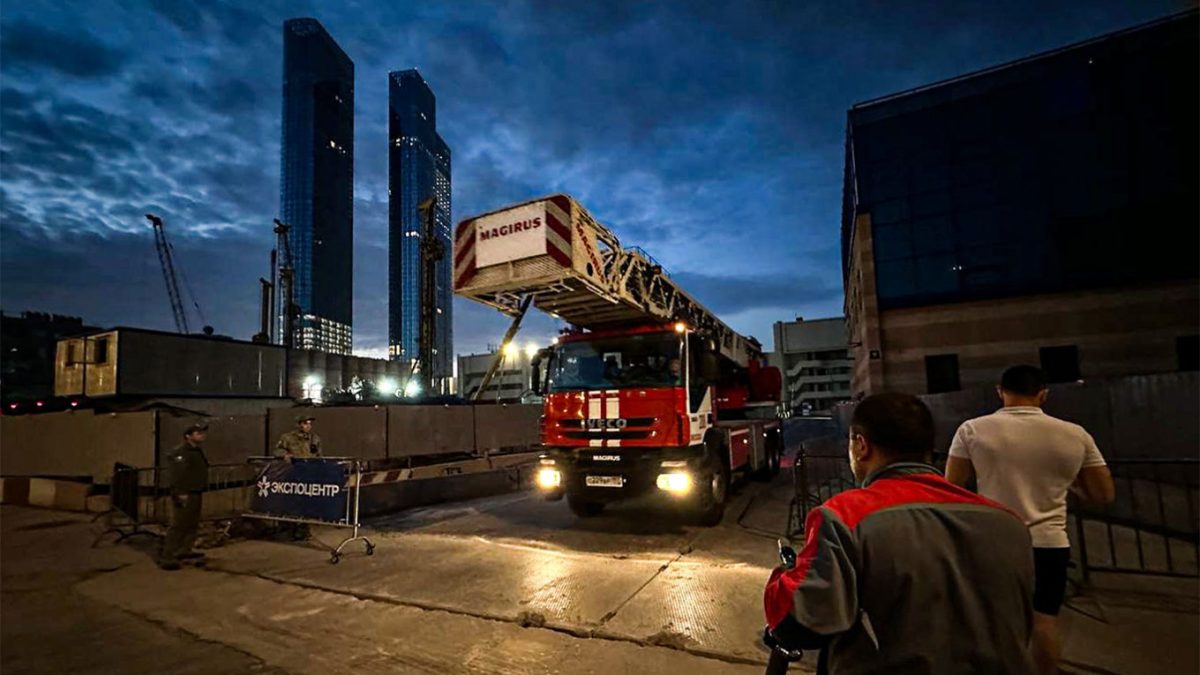
In a concerning escalation of tensions between Ukraine and Russia, a Ukrainian military drone crashed into a building in central Moscow. The incident unfolded after the drone was reportedly shot down by Russian air defence systems, marking another chapter in the ongoing conflict between the two nations.
Moscow Mayor Confirms Aerial Attack
Sergei Sobyanin, the Mayor of Moscow, confirmed the attack through a statement on the Telegram messaging app. According to Sobyanin, the city’s air defence systems successfully intercepted the drone, but the debris resulting from its crash landed on buildings within the Expo Center complex.
Proximity to Key Locations Raises Concerns
The Expo Center complex, a hub for major exhibitions and conferences, is located less than 5 kilometres (3.1 miles) from the Kremlin. This proximity underscores the alarming nature of the attack, as well as the potential risks it poses too significant landmarks in the Russian capital.
Russian Defense Ministry’s Account
The Russian defence ministry revealed that the drone attack occurred around 4 a.m. local time (01:00 GMT). According to their account, Ukraine launched an unmanned aerial vehicle attack targeting locations in Moscow and the surrounding Moscow region. However, the drone altered its course after encountering Russian air defence systems and eventually crashed into a nonresidential building along the Krasnopresnenskaya embankment in Moscow.
Immediate Response and Minimal Damage
Despite the gravity of the situation, no casualties were reported as a result of the drone crash. Moscow’s emergency services swiftly arrived at the scene. Preliminary reports indicate that the wreckage fell within the Expo Center’s vicinity, causing relatively minor damage to the building.
The Extent of Damage and Aviation Impact
Although the Expo Center itself largely avoided significant damage, state-run news agency TASS reported that a portion of the pavilion’s wall had partially collapsed. Emergency services estimated the area of the collapse to be around 30 square meters (323 square feet). Additionally, the incident had repercussions for civil aviation as the airspace near Moscow’s Vnukovo International Airport was temporarily closed, leading to flight delays.
Series of Aerial Attacks
The recent drone crash is just one instance in a series of drone attacks targeting Moscow and its surrounding areas. These attacks have intensified over the past few weeks and have resulted in minor damage to high-rise buildings, particularly in the financial district. Notably, similar aerial strikes were previously executed near the Kremlin in May.
Ukrainian President’s Warning
Ukrainian President Volodymyr Zelenskyy’s recent warning of an impending “war” with Russia now appears increasingly relevant. Zelenskyy had specifically highlighted the symbolic centres and military installations in Russia as potential targets.
Marine Drone Attack in the Black Sea
Adding to the tensions, the Russian defence ministry revealed that it thwarted a Ukrainian marine drone attack targeting its warships in the Black Sea. Ukrainian forces reportedly attempted an attack on Russian Black Sea Fleet vessels using an “unmanned sea boat.” The attack was planned for 10:55 pm local time (19:55 GMT), southwest of Sevastopol, a significant Russian naval base.
Escalating Conflict and Ongoing Challenges
As both Ukraine and Russia continue to employ advanced technology, including drones, in their military operations, the conflict’s intensity and complexity are on the rise. The recent drone crash in Moscow demonstrates the unpredictable nature of the situation and the potential for further escalation. The use of unmanned aerial vehicles introduces a new dimension to the conflict, with implications for both strategic engagements and civilian safety.













